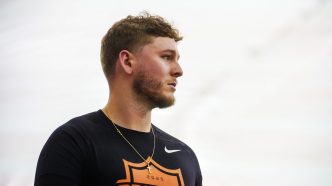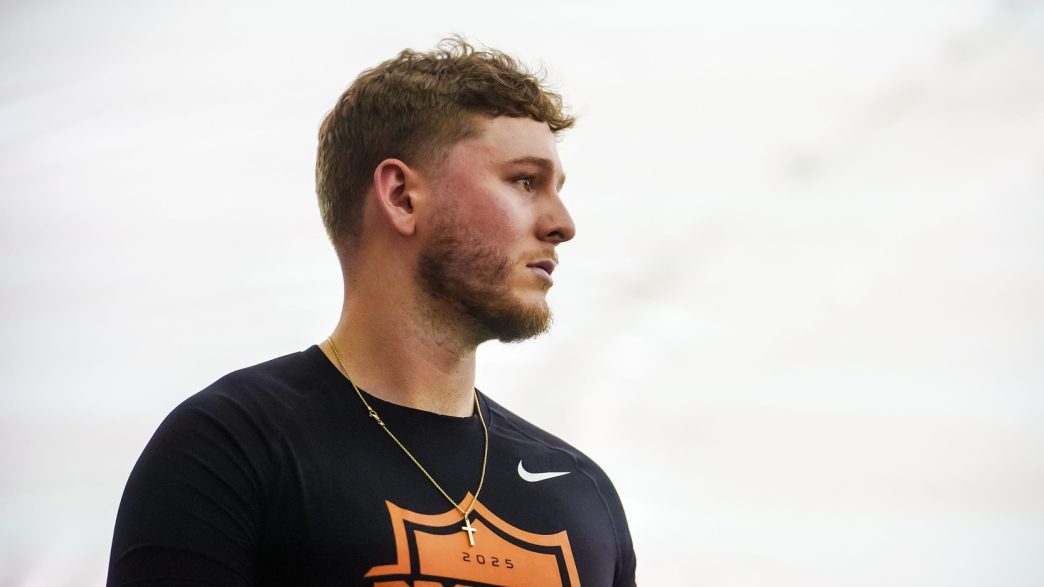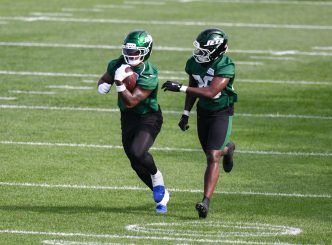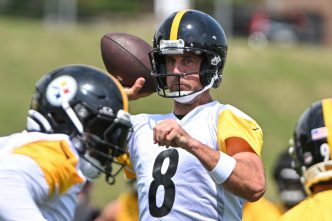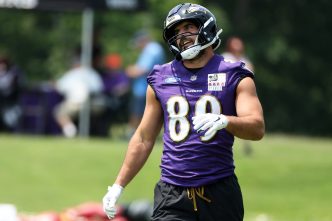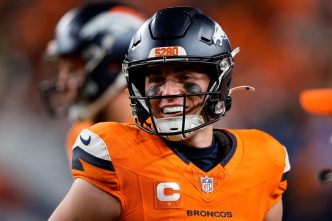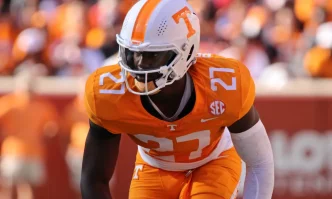Quinn Ewers, once heralded as the No. 1 overall recruit in the 2021 class and a cornerstone of Texas Longhorns football, experienced a shocking slide in the 2025 NFL Draft, ultimately landing with the Miami Dolphins at the 231st overall pick in the seventh round. For a quarterback who led Texas to back-to-back College Football Playoff semifinal appearances and amassed 9,128 passing yards and 68 touchdowns in his collegiate career, this precipitous fall was one of the draft’s biggest surprises. Several factors—ranging from physical limitations to strategic miscalculations—contributed to Ewers’ draft stock plummeting, despite his undeniable talent and college success.
Injury Concerns Diminished His Appeal
One of the primary reasons for Ewers’ slide was his injury history, which raised red flags for NFL scouts. Throughout his time at Texas, Ewers battled multiple ailments, including a shoulder injury in 2022, a torn oblique in 2024, and a high-ankle sprain later that same season. While he demonstrated toughness by playing through pain—most notably in 2024, when he returned from injury to lead Texas to key victories—his durability became a significant concern. An AFC executive noted, “The physicality of a long season wore on his body, and though he was willing to play through pain, his execution clearly was affected.” These injuries not only disrupted his consistency but also fueled doubts about his ability to withstand the physical demands of an NFL season.
Mechanical and Physical Limitations Exposed
Ewers’ on-field performance, while often impressive, revealed technical flaws that didn’t align with the expectations for a high draft pick. Scouts consistently pointed to his inconsistent lower-body mechanics, which hindered his ability to generate power on deep throws. An AFC offensive coordinator told On3, “He can hit short and intermediate, but he’s like an all-arm thrower. He never uses his lower body, and he’s not accurate down the field.” This reliance on arm talent alone limited his effectiveness on longer passes, with only 24 of his 399 pass attempts in 2024 traveling beyond 20 yards, completing just 37.5% of them.
Additionally, Ewers’ arm strength was graded as “adequate” but not elite, lacking the velocity needed for drive throws or far-hash-to-sideline passes. His pocket presence was another point of criticism, as he often bailed from clean pockets or failed to navigate pressure effectively, leading to sacks and turnovers. Dane Brugler of The Athletic noted, “His inconsistent pocket presence led to more negative results than you want to see,” particularly on third downs, where Ewers posted a 55.8% completion rate and a 9-to-7 touchdown-to-interception ratio in 2024. These mechanical deficiencies made him a poor fit for many NFL offenses, which prioritize quarterbacks who can push the ball downfield and extend plays.
Decision-Making and Inconsistency Under Scrutiny
Despite flashes of brilliance—such as road wins over Alabama and Michigan—Ewers struggled with consistency, particularly in high-stakes games. NFL.com’s Lance Zierlein described him as a quarterback who “hasn’t learned to play the game with a high enough level of consistency,” often predetermining targets and throwing into coverage rather than reading the field. His 2024 season, while productive with 3,472 yards and 31 touchdowns, included 12 interceptions and struggles to put points on the board in big games, which tempered enthusiasm about his pro potential.
Ewers’ decision-making was further hampered by his tendency to rely on short and intermediate throws, with 28.3% of his 2024 attempts being screens, quick outs, or check-downs. While effective in Texas’ system, this approach didn’t showcase the full-field reading or play-extending ability NFL teams covet in early-round quarterbacks. As a result, some scouts viewed him as a “distributor” rather than a dynamic playmaker, likening him to a point guard rather than a franchise quarterback.
A Crowded Quarterback Class and Draft Strategy
The 2025 quarterback class, while not as heralded as previous years, was deep enough to push Ewers down draft boards. With 13 quarterbacks selected before him, including high-profile names like Cam Ward and Shedeur Sanders, Ewers faced stiff competition. His pre-draft rankings varied widely—ESPN had him as the seventh-best quarterback, while some scouts didn’t assign him a draftable grade at all. This discrepancy reflects a lack of consensus about his value, as teams prioritized quarterbacks with fewer question marks or better physical tools.
Moreover, NFL teams’ draft strategies played a role. Many franchises with immediate quarterback needs opted for prospects with higher ceilings in earlier rounds, while others, like the Dolphins, saw value in taking a low-risk flier on Ewers late. Miami’s selection was influenced by connections to Texas coach Steve Sarkisian, who praised Ewers’ toughness and mental fortitude, and a schematic fit with Mike McDaniel’s quick-passing offense. However, the Dolphins already had Tua Tagovailoa and Zach Wilson, relegating Ewers to a developmental role, which further underscores why teams weren’t willing to invest high picks in him.
The NIL Decision: A Costly Miscalculation?
Ewers’ draft slide also sparked debate about his decision to forgo another year of college football. With Arch Manning poised to take over at Texas, Ewers reportedly turned down an $8 million Name, Image, and Likeness (NIL) deal to transfer to another program, where he could have earned $3-4 million in 2025 alone. His seventh-round contract, valued at approximately $4.3 million over four years, pales in comparison. Critics argue that another year in college—potentially at a school like Miami or Notre Dame—could have allowed Ewers to refine his mechanics, boost his stock, and avoid the financial hit. However, Ewers’ camp believed the 2025 quarterback class was weak enough for him to stand out, a gamble that backfired as his flaws were magnified during the pre-draft process.
The Path Forward in Miami
Despite the slide, Ewers’ landing spot with the Dolphins offers a silver lining. Miami’s offense, which emphasizes quick releases and short-to-intermediate throws, aligns with Ewers’ strengths. With Tagovailoa’s injury history—missing 30 games in five seasons—Ewers has a realistic chance to compete for the backup role behind Zach Wilson and potentially see the field. His resilience, leadership, and big-game experience, praised by coaches and teammates, give him a foundation to build on. As CBSSports.com noted, “The talent is worth the late-round investment,” even if his decision-making and injury concerns need work.
Conclusion
Quinn Ewers’ fall to the seventh round of the 2025 NFL Draft was a confluence of factors: a troubling injury history, mechanical and physical limitations, inconsistent decision-making, a competitive quarterback class, and a strategic misstep in entering the draft. Once a can’t-miss prospect, Ewers now faces an uphill battle to prove he belongs in the NFL. Yet, his selection by the Dolphins, a team with a system suited to his skill set, offers hope that he can defy the odds. For Ewers, the draft slide may sting, but it also sets the stage for a redemption arc—if he can stay healthy and refine his game. As his girlfriend, Maddy Barnes, posted on social media, “Time to prove them wrong.”

